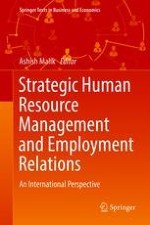2018 | OriginalPaper | Chapter
Managing Change and HRM
Author : Ashish Malik
Published in: Strategic Human Resource Management and Employment Relations
Publisher: Springer Singapore
Activate our intelligent search to find suitable subject content or patents.
Select sections of text to find matching patents with Artificial Intelligence. powered by
Select sections of text to find additional relevant content using AI-assisted search. powered by
Abstract
-
Analyse the key barriers to change
-
Describe the four tasks of managing change
-
Examine and analyse the relationship between managing change and HRM practices
-
Identify the key competencies needed by an HR practitioner in managing change
